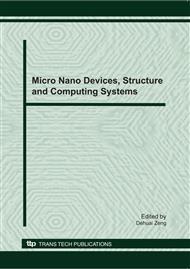p.667
p.671
p.676
p.682
p.686
p.691
p.697
p.703
p.708
Signal-Noise Separation Method Based on PSO for Vibration Signals
Abstract:
The wavelet analysis is combined with particle swarm optimization (PSO) which is applied to the de-noise process of vibration responding signals in this paper. The fault information has been enhanced. Furthermore, the signal-noise separation method based on particle swarm optimization for vibration signal and the diagnosis precision enhancement technology are studied, by means of the blind source separation technique.
Info:
Periodical:
Pages:
686-690
Citation:
Online since:
December 2010
Authors:
Price:
Сopyright:
© 2011 Trans Tech Publications Ltd. All Rights Reserved
Share:
Citation:


